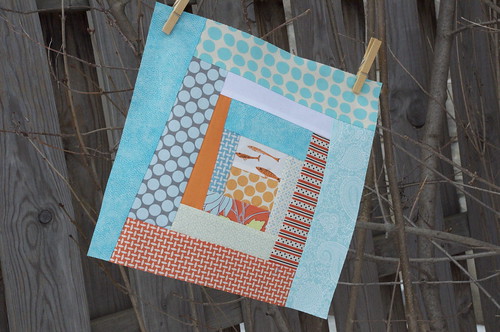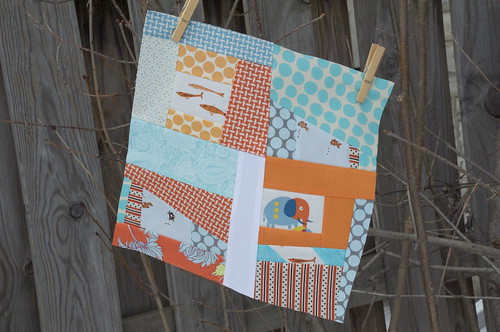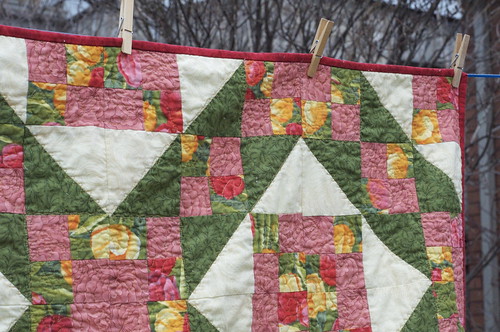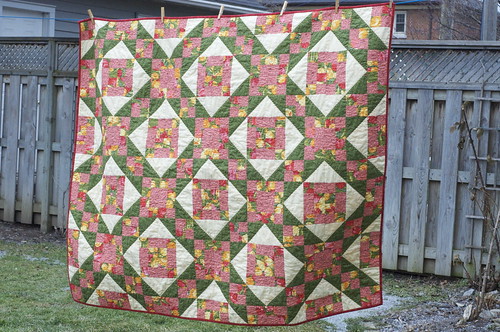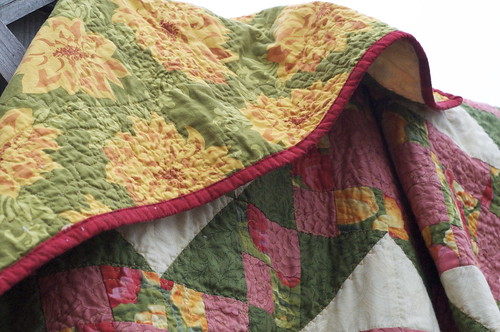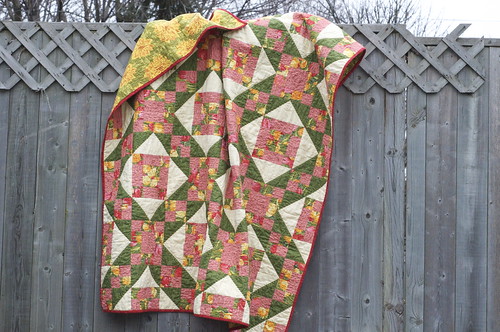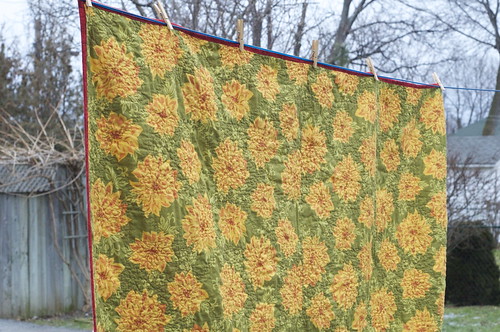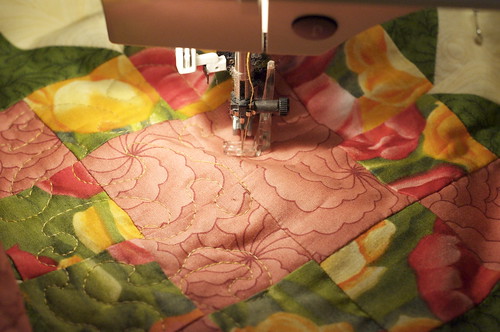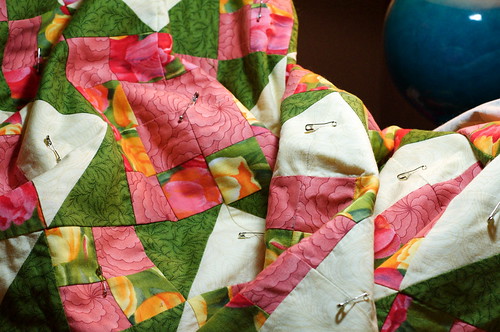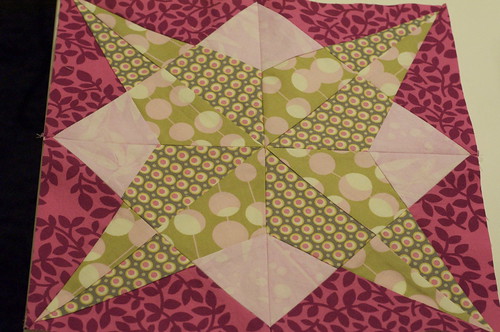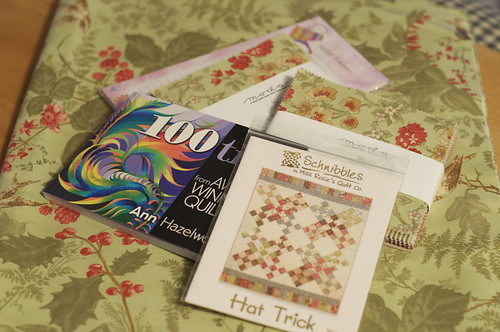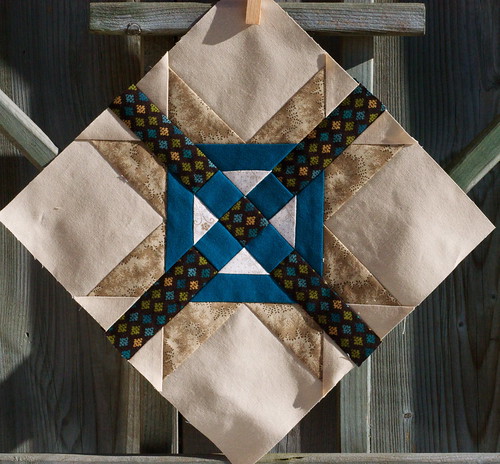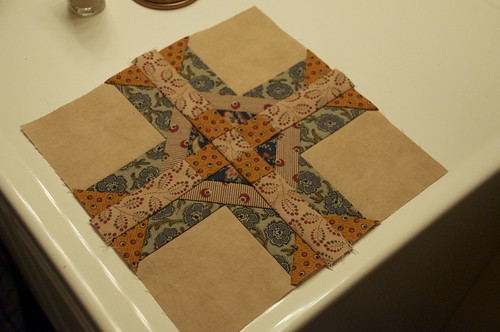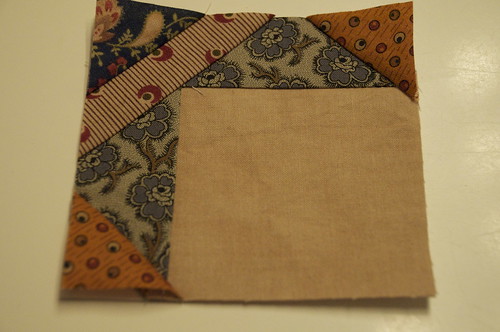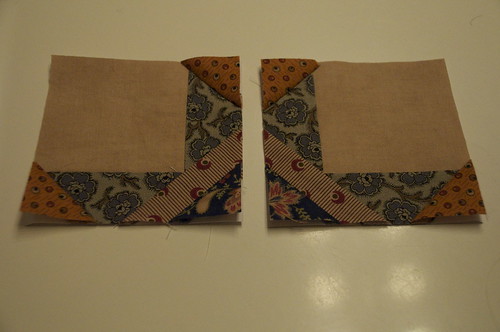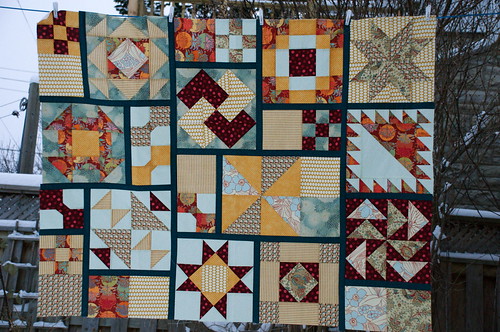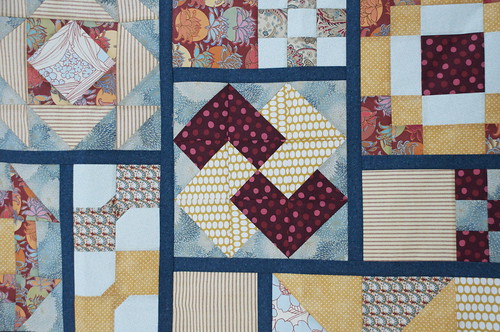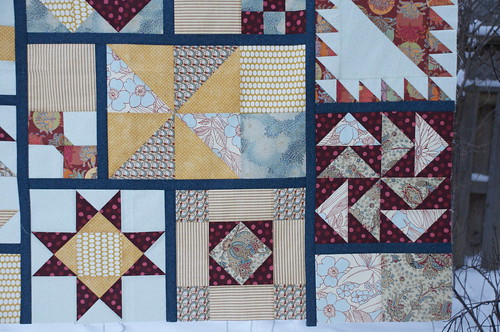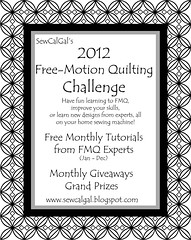This is the reason I decided to start blogging. When I started quilting again this summer, my first project was to quilt up
a flimsy that my mother had left when she passed away suddenly in 2008. I went to the LQS to pick up some backing and batting, and I was very interested in looking around to see what kind of innovations had been released in the quilting world over the past decade-plus. I was especially interested in anything that made binding easier, since I harboured deep-seated anxiety about those dang mitred corners (which I've got licked now, huzzah). The helpful LQS lady raved about the Fons & Porter binding tool as the best thing since the rotary cutter, so home with me it went. I have no memory of using the F&P tool, although I did, since the whole experience of finishing my mother's quilt on the first anniversary of her passing was quite emotional. It must have been charmed - everything went fine.

But shortly after that I made another quilt, and I ran head-on into a brick wall when I tried to make the F&P binding tool work for me. Let me back up. The binding tool is meant to help you determine exactly where to cut the binding so that you have a perfect fit, and also to show you where to mark and sew the ends together so that you have a perfect, continuous, mitred binding with no bunching. When I was making
Blue Meanies , I sat late at night trying to get that binding joined up, but each time it was twisted, and wouldn't lie flat. Seriously, I tried for well over an hour, pinning and basting, re-pinning and re-basting, to no avail. I moved to the internet, looking for a tutorial somewhere, and I did find one, but it was corrupted somehow, so that it stopped in the middle. I felt sure it was just about to show me what I was doing wrong. Imagine reading a murder mystery and when you get to the part where the detective says "And the murderer is...", the pages are missing! Finally, at 2.30am, I coughed up $20 to get access to the Fons and Porter site and watched their 2 minute video. Lo and behold, there it was. The answer. The answer NOT printed on the instructions. At that point I thought, I need to rant about this! But no one in my household was remotely interested (plus being sound asleep) - thus, the decision to blog was born!
Last night I sewed the binding onto the Jacob's Ladder I'm working on, and I took photos to show how to use the Fons & Porter binding tool, which is really an excellent tool for perfectly fitting binding. But there is a trick that isn't mentioned in the instructions. Here are some photos of the process.
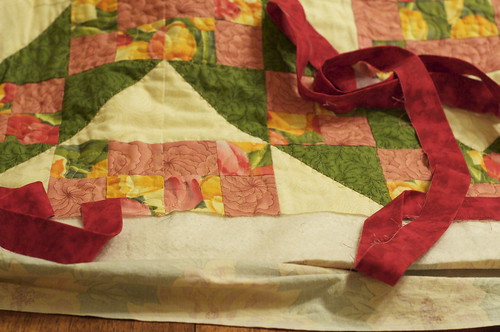
Step 1. Leave about 8 inches unsewn at the beginning when attaching the binding, and stop sewing the binding when there is about a 12" opening. I do not trim the extra batting/backing until the binding has been completely sewn on, but that's up to you - it makes no difference in the use of the tool. Face the quilt so that the open spot is in front of you and the body of the quilt is on your table. Trim the right edge of the loose binding so that it ends in the middle of the open edge.
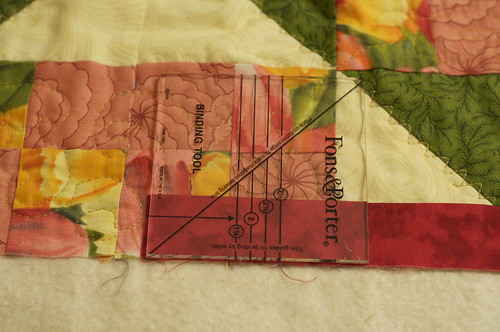
Step 2. Lay the binding tool on the edge of the strip, so that the words "Fons & Porter" are on the right and the left edge of the tool is on the very edge of the binding.

Step 3. Take the left binding strip and lay it over the binding tool. You will fold it at the marking line that matches the width of your binding. Mine was 2 1/2", so you can see the binding folded at the 2 1/2" mark. Trim the binding at the fold.
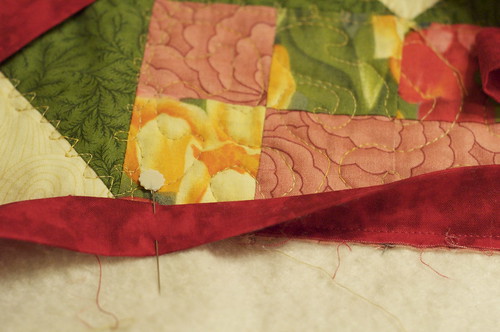
Step 4. MOST IMPORTANT STEP IN THE WHOLE PROCESS. The binding wants to lie flat against the body of the quilt. But you must take the right-hand binding and fold it down, away from the body of the quilt. Pin it where the stitching ends so that it will stay folded down.
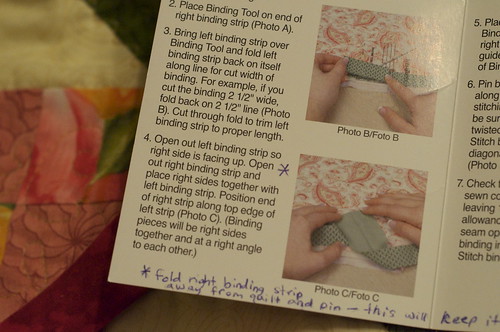
Step 5. Write about Step 4 on the instructions that come with the tool so that you don't forget next time!
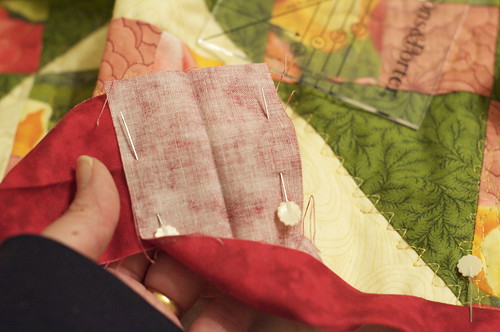
Step 6. Open up each binding strip and lay them together, with right sides facing. Align the raw edges and pin them together. You will have to bunch the quilt up a bit in the open space - that's fine.
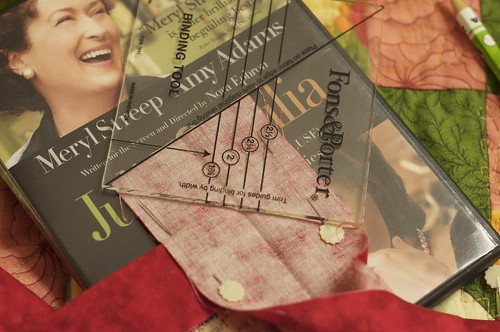
Step 7. Lay the binding tool over the binding segments and align the diagonal line marked on the tool with the raw edges of the binding.
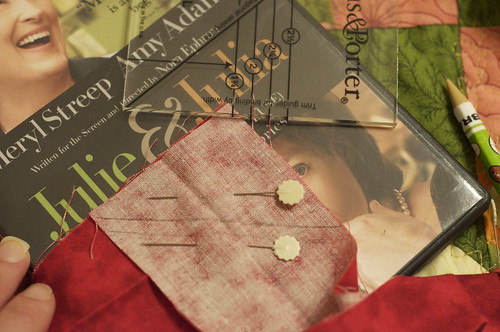
Step 8. Use a sharp pencil to draw a line against the bottom of the tool, making a 45 degree stitching line.

Step 9. Stitch. If you are still skeptical and subscribe to the "measure twice, cut once" school of thought, baste it and test as shown in Step 10 below. Then stitch it once you are sure it will join nicely.
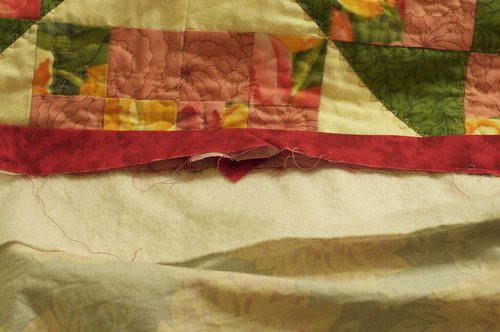
Step 10. Before you trim the seam allowance, check to make sure nothing is twisted and that the binding will lay flat. (This is where I kept running my head into the wall before I found the $20 solution - it would just not lay flat and was twisted every which way.)
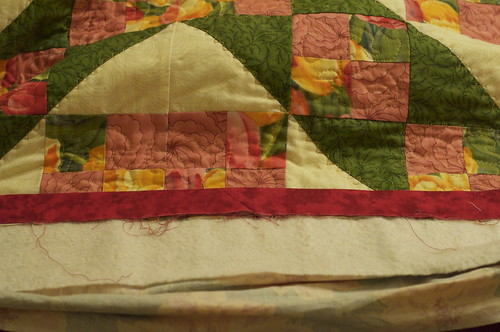
Step 11. Trim. Finger press the seam open and continue sewing the binding down along the open space.
Step 12. Pour yourself a stiff drink and celebrate, admiring your perfect binding!
I hope this is a useful tutorial for you if you have bought this tool and had trouble making it live up to its promise. I do find that it makes perfect bindings, now that I know to pin that piece down. Good luck - I'm not a professional quilting maven, so cannot take any kind of responsibility if you chop your fingers off! This is my first tutorial, so if you think it is confusing please let me know and I'll try to fix it up!
P.S. The binding for that Jacob's Ladder is all basted and ready to be sewn on tonight - I'll do the big reveal tomorrow.
